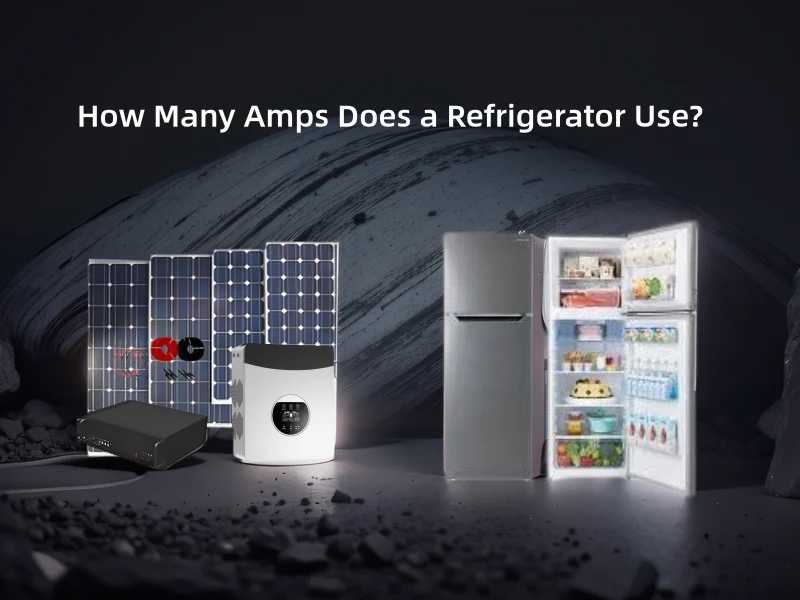How Far Can Solar Panels Be from the House?
If you're thinking about solar but can't or won't mount panels directly to your roof for whatever reason, perhaps the first question you'll have is: how far can solar panels be from the house? While there is no set-in-stone limit, there are important things to note when installing solar panels farther away from the primary power use point—your home. These include things like voltage loss, cable size, and even the layout of your property.

Ideal Distance: Minimizing Energy Loss
The closer to your house, the solar panels are, the better they'll do the job at keeping energy loss down. When electricity flows through wires, it loses some of its energy as heat; this happens because there is electrical resistance present in the wire. The longer the wire is, the greater the resistance—and more energy is lost before it reaches your home. Usually, as long as solar panels are within 100 feet (some 30 meters) from the house, energy loss can be kept under 3%, which is usually acceptable.
Beyond 100 feet, voltage drop becomes more significant, which can decrease the efficiency of your solar system. For distances over 100 feet, you’ll need thicker cables to reduce resistance and maintain power quality, but these cables are pricier and bulkier. So, there’s a balancing act between distance and cost.
Factors That Affect Solar Panel Distance from the House
- Cable Thickness and Material:The farther away you locate your solar panels, the thicker the cable you will need in order to offset the voltage loss. For example, if you're looking at distances of 300 feet or more, you can expect to pay for industrial-grade cabling to be safe, and it can be expensive. Copper cables have less resistance than aluminum ones but are also heavier and more expensive.
- System Voltage:Higher voltage systems, such as 48V systems, experience less energy loss over longer distances compared to lower voltage systems. This is because higher voltage systems require lower current to transmit the same amount of power, reducing resistance. If you’re planning to install your panels further from the house, a high-voltage system is often the way to go.
- Property Layout and Obstructions:The layout and design of your property make a difference, too. Shading caused by trees, sheds, or other structures between the solar array and the house will bring down the efficiency of your solar panels. If your roof isn't ideal for solar panels and you want to install them in a sunny spot in the yard, choosing an area with few obstructions will be important.
Real-World Examples
- Rural Installations: With properties having more land in rural settings, many people often install solar panels hundreds of feet from the house. A farmer may install panels on an open field even 500 feet away from the main residence, if the field gets more consistent sunlight than the house does. They are able to minimize energy loss even over long distances if they used 48V or higher voltage systems along with thick low resistance cables.
- Urban and Suburban Settings:This would mean that most houses, situated in a town or city or even in suburbs, would have solar panels either on the roof or in the backyard within about 100 feet of the house due to generally smaller lots. Most properties in urban settings wouldn't have space to go further anyway.
Question: If you had the ability to put up solar panels over a portion of your property which was really far from where your house is, but gets much more sunlight, would that raise the efficiency high enough to make it worth the extra wiring costs?
Reducing Distance-Related Losses: Tips and Tricks
- Install Panels in Sunny Locations near the House Generally, this is a better idea-to keep the panels closer to your home or the main consumption point of energy. Where homes have well-lit roofs or yards nearby, mounting the panels within 100 feet of the house helps to avoid complex cabling and the loss of energy in useless paths.
- Improve the Quality and Size of the Cable If you still insist on carrying out an installation that is far from the point of consumption, you can invest in quality high-size cables that can help save some of the lost energy. Copper cables, although expensive, have a lower resistance compared to aluminum cables and are thus best suited for long-distance solar installations.
- Consider Going Off-Grid for Remote Buildings If you have any barn, workshop, or cabin that's further out and in need of some power, it may be worth installing a separate, off-grid solar system for that building instead of wiring all the way back to the main house.
A Note on Direct Current (DC) vs. Alternating Current (AC)
Since solar panels generate DC, they are more prone to energy loss over long distances compared to AC, which is what most household systems use. In efforts to cut this loss, some solar installations have put inverters closer to the solar panels, allowing power conversion to AC before it may have to travel long distances. This reduces the impact of resistance and by the time it actually reaches your home, more of the energy generated is intact.
When Long Distance Makes Sense: The Case for Separate Systems
Where looks at 500 feet or farther, consider a separate solar installation. Suppose there is a detached garage, barn, or cabin; it could be more practical to just place the solar panels directly on or near those structures instead of connecting them back to the main house, saving on cable costs and maintaining efficiency. That may turn out to be quite effective for rural areas where such outbuildings are common.







 Afrikaans
Afrikaans Albanian
Albanian Amharic
Amharic Arabic
Arabic Armenian
Armenian Azerbaijani
Azerbaijani Basque
Basque Belarusian
Belarusian Bengali
Bengali Bosnian
Bosnian Bulgarian
Bulgarian Catalan
Catalan Cebuano
Cebuano Chichewa
Chichewa Chinese (Simplified)
Chinese (Simplified) Chinese (Traditional)
Chinese (Traditional) Corsican
Corsican Croatian
Croatian Czech
Czech Danish
Danish Dutch
Dutch English
English Esperanto
Esperanto Estonian
Estonian Filipino
Filipino Finnish
Finnish French
French Frisian
Frisian Galician
Galician Georgian
Georgian German
German Greek
Greek Gujarati
Gujarati Haitian Creole
Haitian Creole Hausa
Hausa Hawaiian
Hawaiian Hebrew
Hebrew Hindi
Hindi Hmong
Hmong Hungarian
Hungarian Icelandic
Icelandic Igbo
Igbo Indonesian
Indonesian Irish
Irish Italian
Italian Japanese
Japanese Javanese
Javanese Kannada
Kannada Kazakh
Kazakh Khmer
Khmer Korean
Korean Kurdish (Kurmanji)
Kurdish (Kurmanji) Kyrgyz
Kyrgyz Lao
Lao Latin
Latin Latvian
Latvian Lithuanian
Lithuanian Luxembourgish
Luxembourgish Macedonian
Macedonian Malagasy
Malagasy Malay
Malay Malayalam
Malayalam Maltese
Maltese Maori
Maori Marathi
Marathi Mongolian
Mongolian Myanmar (Burmese)
Myanmar (Burmese) Nepali
Nepali Norwegian
Norwegian Pashto
Pashto Persian
Persian Polish
Polish Portuguese
Portuguese Punjabi
Punjabi Romanian
Romanian Russian
Russian Samoan
Samoan Scottish Gaelic
Scottish Gaelic Serbian
Serbian Sesotho
Sesotho Shona
Shona Sindhi
Sindhi Sinhala
Sinhala Slovak
Slovak Slovenian
Slovenian Somali
Somali Spanish
Spanish Sundanese
Sundanese Swahili
Swahili Swedish
Swedish Tajik
Tajik Tamil
Tamil Telugu
Telugu Thai
Thai Turkish
Turkish Ukrainian
Ukrainian Urdu
Urdu Uzbek
Uzbek Vietnamese
Vietnamese Welsh
Welsh Xhosa
Xhosa Yiddish
Yiddish Yoruba
Yoruba Zulu
Zulu